
On July 2, 2019, Nicholas Coppola, MD, CEO of the Mental Health Association of Indian River County, FL (MHA) compassionately addressed the Indian River County (IRC), FL County Commissioners questioning why his organization, advocating for a school violence and suicide prevention program for ten Indian River County schools, received no funding from the Children’s Services Advisory Council (CSAC).
The program curriculum would be based on “Erika’s Lighthouse,” who’s mission is to make sure no young person feels alone in their depression. They are dedicated to creating a community of empathy and education, creating middle school and high school teen depression awareness programs so educators and teens can create safe spaces to learn about depression; letting students know they are never alone, and there is somewhere to turn.
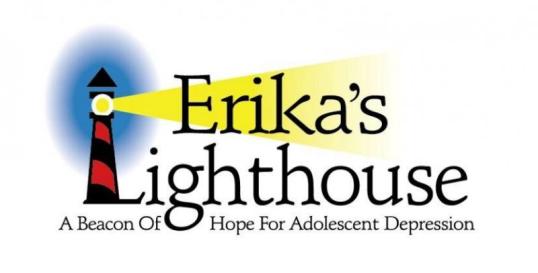
“Teenage depression thrives in isolation. It feeds on silence. It lives in the darkness. That’s why we [they] are dedicated to light, to conversation, and to community.”
“You dropped the ball on us,” said Dr. Coppola. “Teenagers aged 10 – 17 are the largest group of people committing suicide in this Country. It is the second leading cause of death for those ages 15 to 24. Every day in the US 1,349 teenagers attempt to commit suicide.
I don’t see any thing that they (CSAC) have approved for mental health. Mental health is the largest threat to us as a society.”
The CSAC “overlooked” the importance of the $ 75,000 request for suicide prevention funding because there appeared to be hasty interviews and misunderstandings, which we’ll save for later.
Five agencies, of the 31 agencies who applied for funding, received 51% of the CSAC $ 2,012,610 funding. (Agencies may seek funding for multiple programs.)
- Childcare Resources of Indian River County : $ 342,236
- Substance Abuse Council: $ 210,000
- The Learning Alliance: $ 190,000
- Education Foundation: $ 166,196
- Hibiscus Children’s Center: $ 123,250
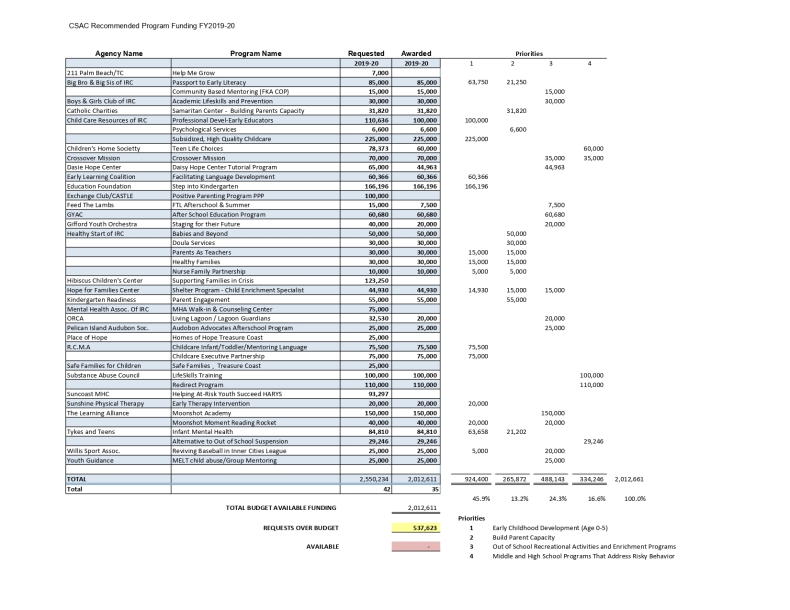
IRC Resolution No. 90-167 dated 10/30/90 established the CSAC. Ordinance 99-01 dated 9/16/98 expanded the Children’s Services Network to “promote healthy children in a healthy community in Indian River County. The term ‘healthy’ encompasses socioeconomic, physical environment, educational and behavioral health.”
In 2015 the CSAC established four focus areas for proposals requests, ranked in order:
- Early childhood development
- Build parent capacity
- Out-of-school recreational activities
- Middle and high school programs that address risky behavior (delinquent behavior, teen pregnancy, sexual transmitted diseases, bullying, etc.) “There is a lot of at risk behavior and we need to ensure it is addressed early and repeatedly.”
Times have changed since 2015 and continue to do so at a rapid pace. The CSAC needs to update their focus areas.
Two teachers from the Sebastian River Middle School, Sebastian Florida recently said that in last two years things have changed dramatically. “I sometimes can’t tell a boy from a girl and sometimes when I address a boy or girl he/she says his/her name is now a different boy or girl’s name.”
At the conclusion of his remarks Dr. Coppola asked the Commissioners for answers.
Chairman Bob Solari was the first to speak. “…sometimes with these committees it is seen that over time you get people that want a certain direction that they want to go into and try to promote their interests in them. It happens regularly.”
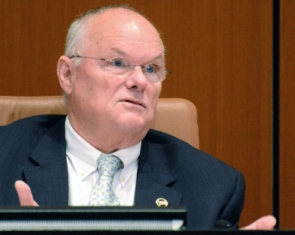
Chairman Bob Solari
Commissioner Joe Flesher: “Quite frankly the mental health arena was the one that was vacant from the allocation. The last time the review was done (Needs Assessment) mental health was not as significant as it is today.”
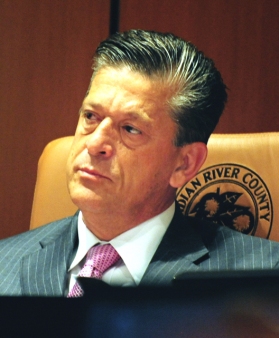
Commissioner Joe Flesher
Despite discussion between the Commissioners on how they might find funding for the MHA request, they voted unanimously to approve CSAC’s allocations, so as not to interfere with their work. Commissioner Peter O’Brian said: “It was unfortunate this was not funded.”
Mr. Robert Schlitt, Jr – Member-at-Large of CSAC was the last to address the Commissioners.
He indicated that “Each program is given 20 minutes to present to the CSAC Committee. 41 programs requested funding this year. From 8:00 a.m. to 4:00 p.m. on a Thursday and Friday every program was given 20 minutes. Every program had that same 20 minutes and we were just clicking along (emphasis added). We had people outside waiting to make their presentations.
Further, “Some of the reason the Committee decided not to allocate to MHA…quite honestly the presentation made by Mental Health was less than optimal. We weren’t clear on exactly what they wanted to do with their program.”
In his earlier remarks, Dr. Coppola indicated they were only given 10 minutes.

Dr. Nicholas Coppola
Resources for mental health counseling in our schools is a problem.
In fact, just three states meet the recommended ratio of at least one school counselor for every 250 students, said a recent ACLU analysis of the most recent federal data, collected by the U.S. Department of Education in 2015-16. And just three states met the recommended ratio of at least one psychologist for every 750 students, the analysis said.
And don’t underestimate the need for mental health counseling for the depressed student LGBTQ+ population.

In a 1/14/16 scholarly article in the U.S National Library of Medicine National Institutes for Heath, Stephen T. Russell and Jessica N. Fish wrote:
“Today’s lesbian, gay, bisexual, and transgender (LGBT) youth come out at younger ages, and public support for LGBT issues has dramatically increased, so why do LGBT youth continue to be at high risk for compromised mental health?
US and international studies consistently conclude that LGBT youth report elevated rates of emotional distress, symptoms related to mood and anxiety disorders, self-harm, suicidal ideation, and suicidal behavior when compared to heterosexual youth (Eskin et al. 2005, Fergusson et al. 2005, Fleming et al. 2007, Marshal et al. 2011), and that compromised mental health is a fundamental predictor of a host of behavioral health disparities evident among LGBT youth (e.g., substance use, abuse, and dependence; Marshal et al. 2008). In a recent meta-analysis, Marshal et al. (2011) reported that sexual minority youth were almost three times as likely to report suicidality…”
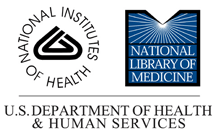

Related Article: